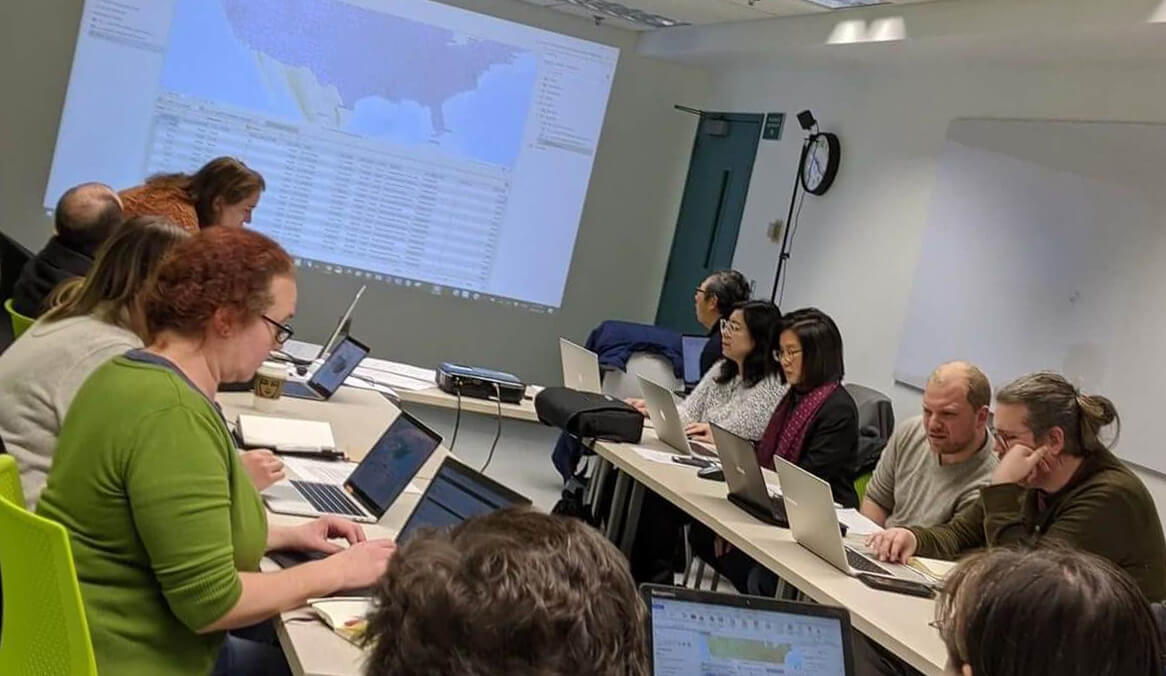The Spatial Humanities Working Group (SHWG) is a group of scholars at Binghamton University who seek to foster and support spatial humanities digital scholarship on campus by workshopping papers, teaching digital tools and methods, and engaging critically with existing scholarship in this emerging field. The group is informal and open to faculty and graduate students across a diversity of fields within (and beyond) the Humanities and Social Sciences.

Current Members of the SHWG
The SHWG kicked-off its first meeting in Fall 2019 and the group includes faculty, librarians, professional staff, and graduate students across departments. Our members' skills and experience levels vary with our knowledge of spatial humanities. Some members are already developing projects and curriculum related to spatial humanities while others are just beginning their journeys into learning about these types of projects. Learn more about those who are part of the SHWG by visiting our current SHWG member profiles. If you are interested in joining the SHWG, reach out to Brad Skopyk.
Materials from Past Meetings
Our past meetings and events have included project discussions, researching and reviewing public projects developed at other institutions, and workshops on platforms and software available for spatial humanities projects.
Event Archives
Additional content:
- April 2021 - storymap containing resources and a recording of our Omeka S webinar
- March 2021 - recording of Spreadsheets for Humanities Scholars session
- December 2020 - storymap containing resources and a recording of our Omeka Classic + Neatline webinar
- February 2023 - Starting a Digital Project Storymap with best practices and examples of where to start when planning a digital project of any kind
- May 2023 - Designing Databases for Humanities Projects Storymap best practices and guidance for getting started with database design
- September 2023 - Mapping in R and Leaflet requires downloading R and R Studio. For more tutorials on mapping in R check out Melissa Haller's RPub Page.